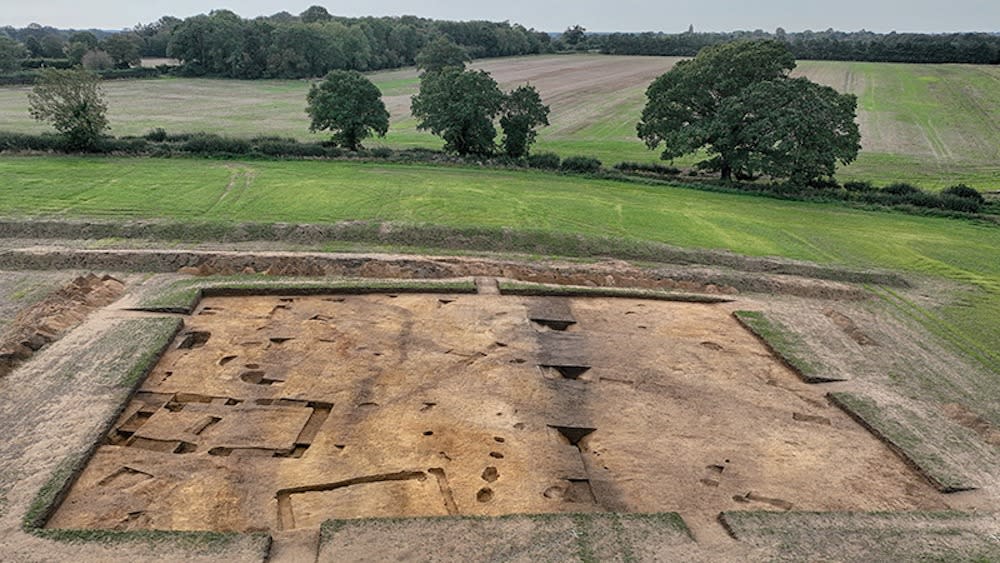1,400-year-old structure discovered near Sutton Hoo in England may have been a pagan temple or cult house

Archaeologists in England have unearthed the 1,400-year-old remnants of a possible pagan temple or cult house that was once part of a royal compound.
The discovery was made this summer during ongoing excavations at Sutton Hoo, a massive burial site in what is now Suffolk, a county in eastern England. The historic site was originally occupied during the seventh century. Since the site's initial discovery in 1939, archaeologists have been unearthing surprising finds, including 18 burial mounds and an Anglo-Saxon ship.
With the help of more than 200 volunteers, including schoolchildren, archaeologists unearthed the foundations of the temple along with two other outer timber buildings. The entire compound likely covered 37 acres (15 hectares), according to a statement from Suffolk Heritage Explorer, a blog published by the Suffolk County Council.
Archaeologists think the royal compound may have been overseen by King Raedwald, king of the East Angles, who converted to Christianity and later died around 627; he's believed to be buried at Sutton Hoo.
"Its distinctive and substantial foundations indicate that one of the buildings … was unusually high and robustly built for its size, so perhaps it was constructed for a special purpose," Christopher Scull, an honorary visiting professor at Cardiff University in Wales who led the excavations, told BBC News. "It is most similar to buildings elsewhere in England that are seen as temples or cult houses, therefore it may have been used for pre-Christian worship by the early Kings of the East Angles."
Related: Metal detectorist finds sword pyramid from time of mysterious Sutton Hoo burial
In his eighth-century book "The Ecclesiastical History of the English People," the Venerable Bede, an English monk and scholar, mentioned a "king's village" at "Rendleaesham" (Rendlesham, a village in Suffolk) that contained a temple with altars dedicated to pre-Christian gods as well as Jesus Christ, according to BBC News.
The compound, which Scull described as "remarkable," contained a nearly 1-mile-long (1.5 kilometers) ditch around its perimeter and was part of an even larger settlement complex covering 124 acres (50 hectares), according to the statement.
RELATED STORIES
—Anglo-Saxon hall where kings and warriors dined discovered in England
—Subterranean crypt with empty tombs unearthed at medieval cathedral in England
—5,000-year-old tomb holding hugging skeletons in Scotland is Neolithic 'feat of engineering'
Volunteers also unearthed a fired clay mold that was used for casting horse harnesses and the disposing of waste products — evidence of seventh-century metallurgy (metalworking) — along with two graves.
"The results of excavations at Rendlesham speak vividly of the power and wealth of the East Anglian kings, and the sophistication of the society they ruled," Shull told BBC News. "The possible temple, or cult house, provides rare and remarkable evidence for the practice at a royal site of the pre-Christian beliefs that underpinned early English society."
Read more about the find from BBC News.

